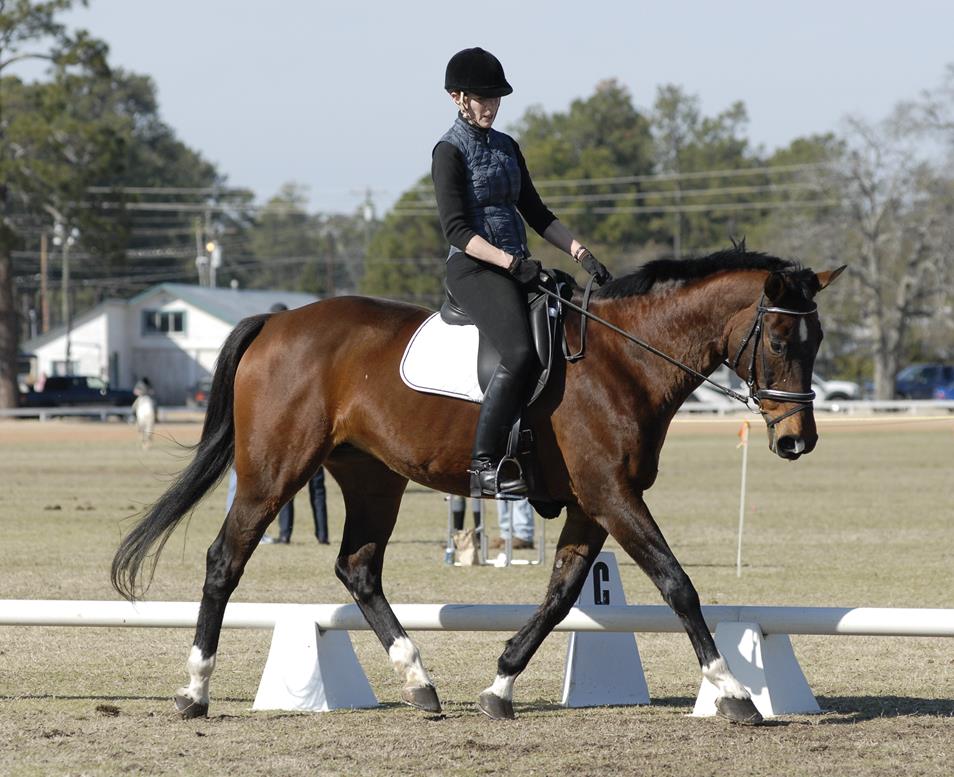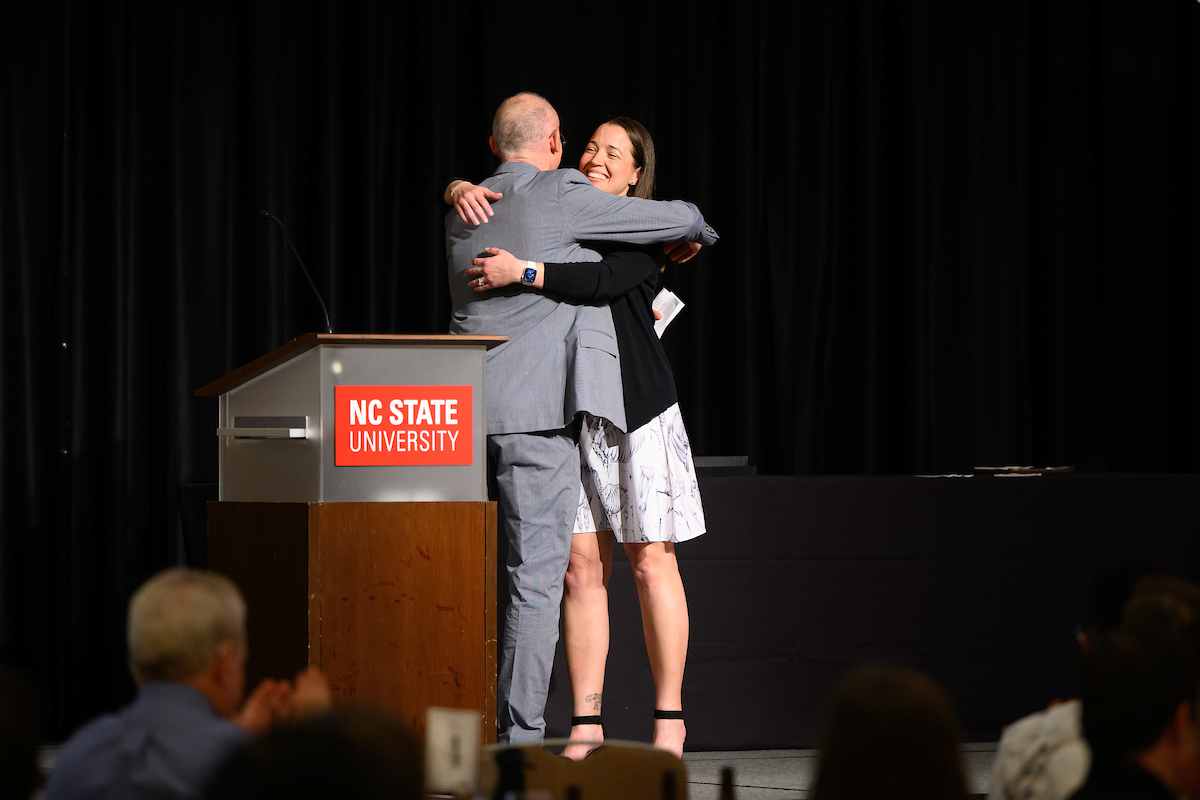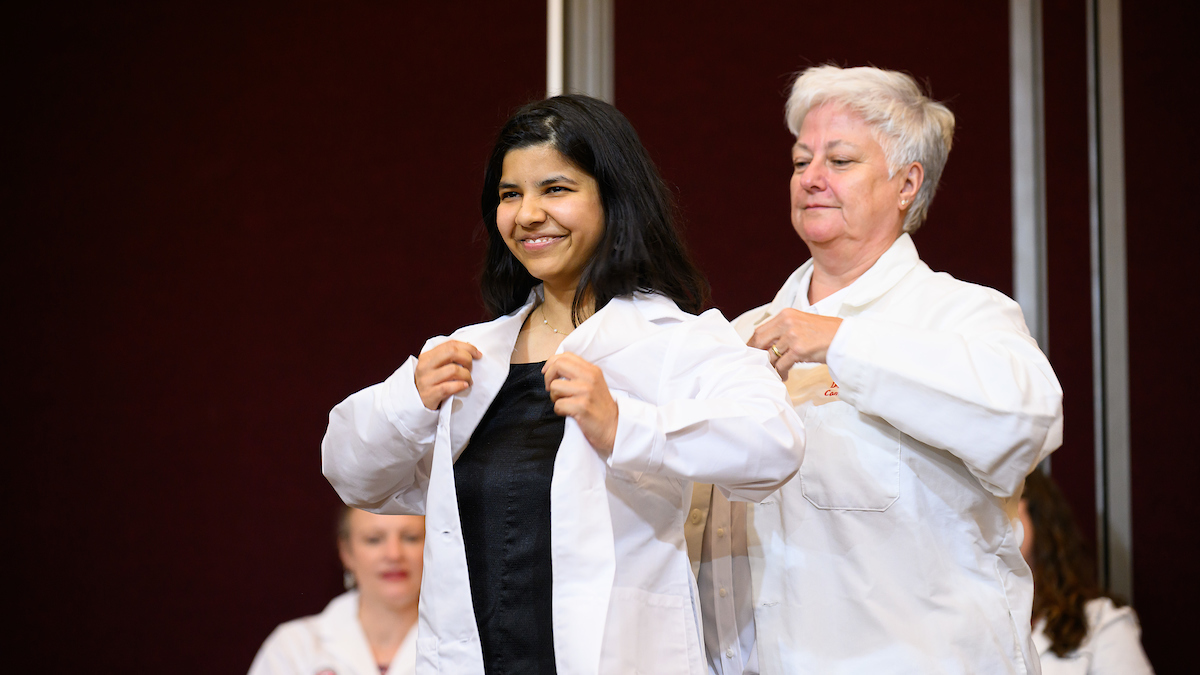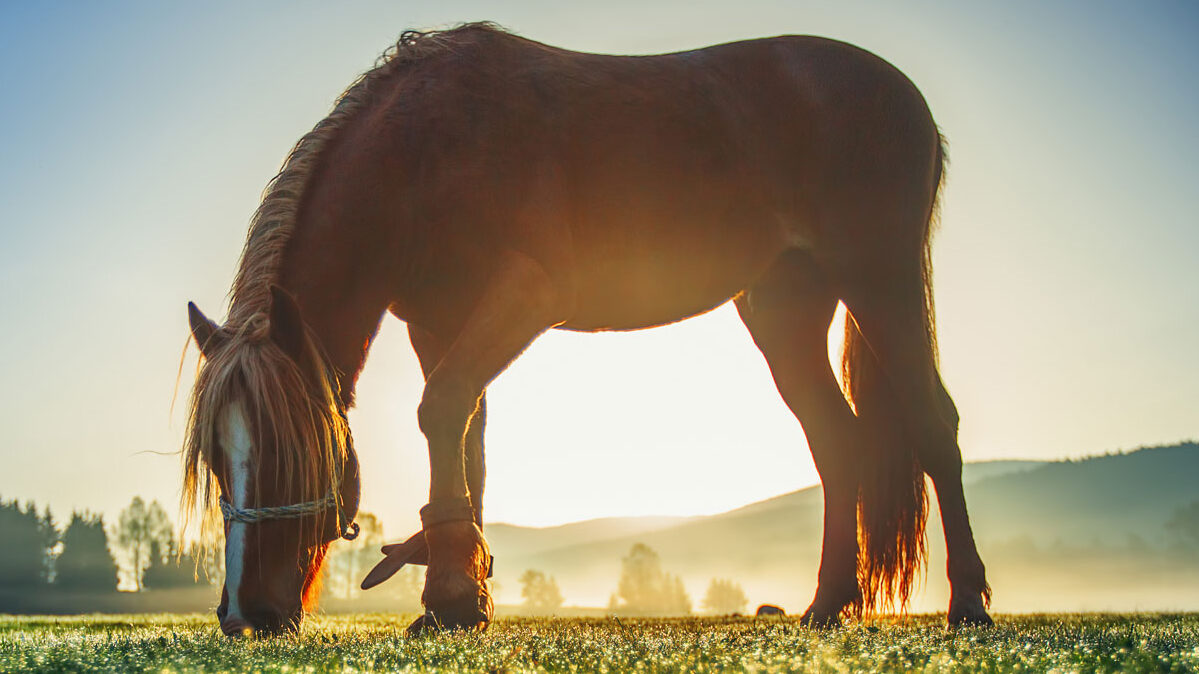Goodbye Amy: A Veterinarian Learns Life Lessons and Dressage from a Patient Performance Horse

Dr. Barbara Sherman, clinical professor of veterinary behavior at North Carolina State University’s College of Veterinary Medicine, writes about her time with Amy, a Hanoverian mare and dressage champion. The original article on the Hoofbeats page in the Nov. 11, 2012 issue of the Southern Pines newspaper, The Pilot.
Back in the day, at local dressage shows, everyone knew Sue Smithson’s big, handsome Hanoverian mare with a kind eye.
She was Tamelia, also known as Amy. I’d see folks greet Sue and Amy by name, pet Amy’s long, sleek neck, and wish the pair luck before they entered the ring.
I knew Sue well, in part through her long-term authorship of The Pilot’s

Hoofbeats column. She sometimes wrote about Amy, whom she’d raised and trained, and I followed the chronicles of this gentle-natured mare and their close relationship.
Ten years ago, I received an email from Sue. Would I like to try Amy?
Sue explained that, at 17 years of age, Amy needed to “step down” from the exalted dressage level of Prix St. Georges and become a schoolmaster, a teacher.
Sue was looking for a lease situation for her. Just reading the message made me smile in eager anticipation. Amy? Oh, yes!
As a busy veterinarian and mom (with limited “discretionary” time), I was seeking a dressage veteran like Amy to help me learn this equestrian art form.
On the designated day, I met Sue and Amy at a local dressage ring. After demonstrating what Amy could do, Sue invited me to mount.
I was grinning ear-to-ear. Sue explained the terms. A lease agreement, $1 per year, revocable at any time.
She looked at me steadily. It was clear that Amy’s happiness was paramount.
“Sue,” I asked. “Why are you offering Amy to ME? I’m a relative dressage beginner and you know everyone, including many people who ride with much more skill than I do.”
“That’s true,” she said. “But I’ve been thinking about this a lot and considered everyone I know in Southern Pines. I want Amy to step down to the lower levels, within her physical ability, and to be a teacher — she’s so good at that.
“I picked you because I think she will teach you a lot, and you will take good care of her.”
It was the best recommendation I’ve ever received. We finalized the arrangement and I began to ride Amy.
At first, I could not catch her. A veterinary behaviorist by trade, I thought I knew every trick to catch a horse. Not one worked on Amy.
Embarrassed, each time I went to ride, I’d call Sue to come and catch Amy for me. “It’s her built-in theft avoidance system,” Sue would laugh. “She’ll get to know you.”
Eventually she did, coming to the gate in greeting when she saw me or heard my car approach. Sue remained part of Amy’s life, often helping with any special care and exercising her when I was out of town.
Amy was dependable and sound and would do anything on request: cross a stream, stand quietly while deer ran across the trail, perform a turn on the haunches, teach me the proper bend for half-pass.
I took dressage lessons with Nina Hatcher and Jim Koford, and we went to dressage shows. At one recognized Pinehurst show, we won a First Level class with a solid score of 74.1 percent and received high praise from the judge: “Nice team! Horse and rider are very well matched.”
She did a bit of everything: She was used as a team horse for college dressage competition. She won Versatility classes. My daughter, Diana, rode her bareback for a swim in the pond.
Long rides with Amy in the Walthour-Moss Foundation saw me through my divorce. With time and age, Amy slowed a bit, but her physical limitations and my time limitations were compatible.
Then one Sunday in October 2012, I got a call. While trotting in her paddock, Amy had slipped and fallen.
Veterinarian Dr. Lisa Kivett had been called. When I arrived, Amy was standing on three legs, quivering in distress, her left hock badly swollen.
Oddly, she had grass stains on the front of her pasterns, showing that she’d fallen and skidded with her legs straight behind her.
Dr. Kivett took radiographs and found no fractures. But Amy had ruptured her peroneus tertius, a ligamentous component of the “stay apparatus” that allows horses to simultaneously stand and sleep.
Dr. Kivett prescribed two months of stall rest, with a good prognosis for return for useful activity.
Over the next few days, Amy began to bear weight on the injured leg and seemed increasingly bright and alert.
But after a week, although her injury looked better, she seemed to alternate weight on her hind legs, clearly in discomfort.
I enhanced her pain medication without success, and began to contemplate her quality of life in conversations with Dr. Kivett.
Days later, I found her unsteady, slightly ataxic. By that evening, she was barely able to keep her balance, often propping herself on her half-door to stand.
When I placed my hand on her hip, she leaned, seemingly grateful for the support. The reason for Amy’s initial fall in her paddock was now apparent.
I called Dr. Kivett and she came immediately to confirm the diagnosis I knew in my heart: Amy had EPM, equine protozoal myeloencephalitis.
Treatment was long and the prognosis guarded. To prevent her suffering, we began to make arrangements for humane euthanasia.
The next morning, with friends to help, Amy willingly wobbled onto the trailer, then took the short ride to a special place.
She backed off the trailer carefully, placing each leg with deliberation and steadying herself before each move.
Then, we stood together under longleaf pines, her head pressed to my chest, and we said goodbye.
I thanked her for all that she’d taught me about life: about being kind to everyone, about the fun of learning new things, about doing your best with the gifts you are given, about goodness and patience, and, of course, about dressage.


